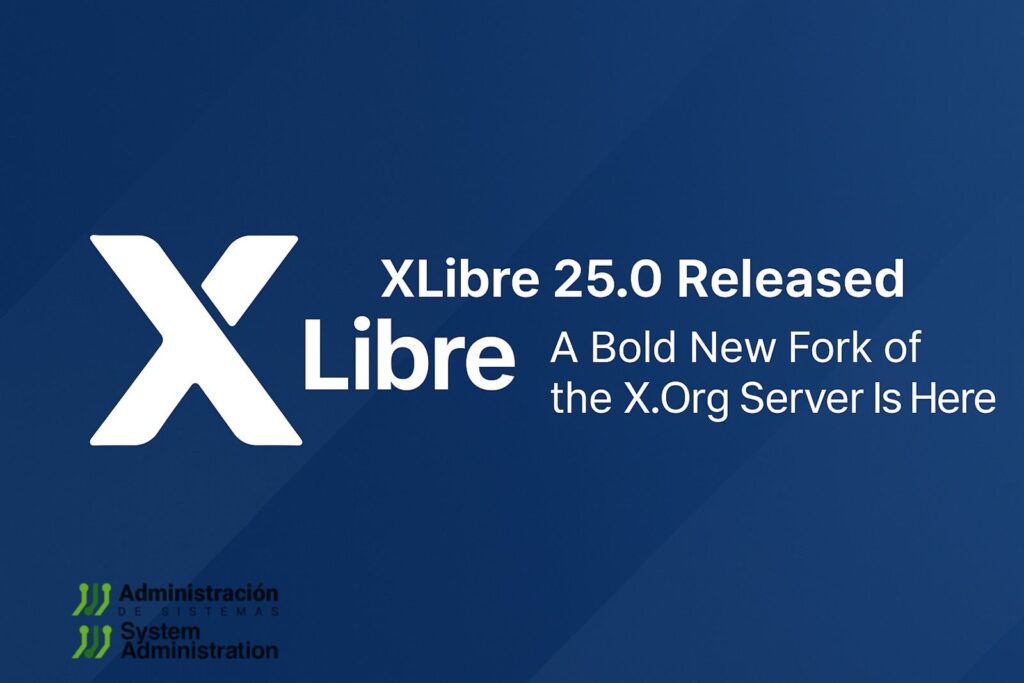The Linux graphics ecosystem has a new contender with the launch of XLibre 25.0, the first official release of a fork of the long-standing X.Org Server. This new project emerges as a direct response to the growing stagnation of the upstream X.Org codebase and aims to revitalize the X11 server architecture, just as many Linux distributions are pivoting toward Wayland as the default display protocol.
Developed and announced by Enrico Weigelt, XLibre 25.0 features over 3,000 commits, including extensive code clean-ups, security patches, and a series of notable technical enhancements. It represents the most significant X server release in years, marking a new chapter in the history of the X Window System.
What’s New in XLibre 25.0?
Unlike the minor updates seen in the final years of X.Org, XLibre 25.0 introduces meaningful architectural and functional improvements:
- Xnamespace Extension: A new security mechanism to isolate X11 clients into namespaces (e.g., for containerized environments), offering stronger protection than the aging Xsecurity protocol from 1996.
- Xnest Migrated to XCB: This legacy tool no longer depends on the outdated Xlib library, instead using XCB for more modern and efficient interaction with the X protocol.
- Per-ABI Driver Directories: Enables distributions to install drivers for multiple ABIs simultaneously, easing transitions and simplifying upgrades.
- Numerous Bug Fixes and Code Refactors, including several CVE patches aimed at improving the overall security posture.
- Preserved Compatibility with NVIDIA Drivers, with particular attention to avoiding regressions in proprietary binary support.
As with most “.0.0.0” releases, the maintainer considers this version a beta-quality milestone, encouraging users and Linux distributions to test it widely and report feedback.
The Motivation: A Stand Against IBM/Red Hat’s Stewardship of X.Org
In a candid and strongly-worded statement, Weigelt accuses the current maintainers of X.Org—primarily IBM/Red Hat—of deliberately letting the project wither:
“This fork became necessary because the majority within the current X.Org group (IBM/Red Hat) expressed their desire to abandon the project, let it rot, and block substantial contributions.”
Weigelt also alleges that his work was suddenly censored and banned from freedesktop.org after the first public mentions of the fork, reinforcing his belief that a clean break was the only way forward.
An Inclusive and Open Vision for X Development
XLibre positions itself as a fully inclusive community-driven project, in contrast to what Weigelt describes as the historically “elitist circles” surrounding both XFree86 and X.Org development. His vision for XLibre is radically open:
“It doesn’t matter your country, your politics, your shoes, your age, or whether you’re a furry creature from Alpha Centauri. Everyone is welcome here—if you’re willing to help move X forward.”
Availability and Technical Details
The source code for XLibre is publicly available on GitHub:
- Repository: https://github.com/X11Libre/xserver
- Tag:
xlibre-xserver-25.0.0.0
This release includes a breaking change to the X server ABI, meaning most drivers will need to be rebuilt. The project maintainers have taken special care to maintain compatibility with proprietary NVIDIA drivers, aware of their ongoing relevance in both desktop and professional Linux environments.
Notably, subtle ABI-level incompatibilities between X.Org and XLibre modules are beginning to emerge. As such, the team strongly recommends using XLibre’s own driver repositories (prefixed with xlibre-xf86-) to ensure system stability.
A Fork for Legacy and Future Use Cases
XLibre arrives at a time when many major Linux distributions—such as Fedora and GNOME—are accelerating their transition to Wayland-only desktops. However, X11 still powers a wide range of legacy applications, virtualized desktops, remote setups, and use cases where Wayland is not yet fully viable.
By embracing innovation, transparency, and inclusion, XLibre aims to be a revitalized home for the X11 ecosystem, open to all contributors and maintainers, and able to evolve in response to real-world needs rather than being frozen by institutional inertia.
In short, XLibre 25.0 is more than a technical update—it is a philosophical and practical reboot of one of the most foundational components in the Linux desktop stack. Its future now lies in the hands of the community it seeks to empower.
Via: X List

